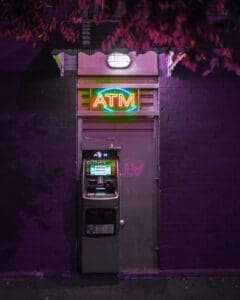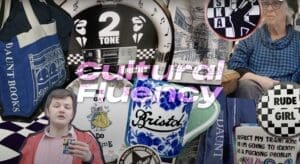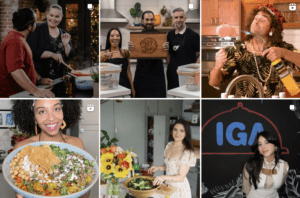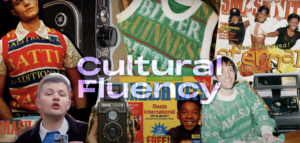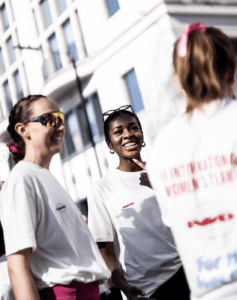Barbie has been painting the world pink. Since the teaser trailer was released back in November, there has been a steady infiltration of all things Barbie across social and beyond.
From clothing to gaming, internet trends and even a real-world Barbie Dreamhouse, the marketing team behind Barbie have created the biggest, most immersive marketing campaign we have seen in a long time.
It begged the question: will the buzz last once the film is released and will it result in actual ticket sales for the film? We now know the answer. Barbie has beaten a box office record held by Christopher Nolan’s 2008 superhero blockbuster The Dark Knight, and took in $26m (£20m) at the US box office on Monday (24 July). Globally, Barbie has grossed more than $750 million so far and ranks as the third-largest film of the year, according to Variety.

The marketing of this film has been so successful because it has tapped into something we can all relate to: nostalgia. Collaborating with brands that most predominantly target millennials, Barbie set out to reinvigorate our inner child and allow us all to inject a little fun (and pink) back into our lives.
Here, we’ve put together a run down of how Barbie’s nostalgia marketing strategy was so effective – and how you can embed it into your own brand strategy:
Fashion
You’ll undoubtedly have heard of method acting – a technique whereby an actor fully commits themselves to the character they’re playing for the duration of a project both professionally and personally – but have you heard of method dressing? The cast of Barbie certainly lived and breathed their roles fashion-wise long after they stopped shooting.
Method dressing is where actors communicate iconic elements of a film through the medium of fashion during the press run. We have seen this from stars such as Halle Bailey when promoting The Little Mermaid in her aqua mermaid gowns; Zendaya when promoting The Greatest Showman; and Jenna Ortega who fully embraced her character Wednesday on the red carpet. Most recently, Margot Robbie has embodied Barbie at every premiere.
There is a theory that you can’t have a cult classic movie without an ‘identifiable, iconic outfit that can be turned into a Halloween costume’, says TikTok creator Nicky Reardon here. It’s about creating an outfit or a look that transcends languages, is immediately identifiable, and is widely used in film promotion now when actors wear outfits that pay homage to the film or a niche reference in it on the red carpet.
@nicky.reardon "If your movie can't be turned into a halloween costume then its not memorable enough" #movies #movietiktok #popculture #halloweencostume #halloween ♬ original sound – Nicky
In Barbie’s case, each of Margot Robbie’s pink carpet looks represented an iconic vintage Barbie doll that audiences might have owned when they were children. This strategy gave each premiere an element of suspense and surprise; from the 1960 Enchanted Evening Barbie for the London premiere of the film to the 1992 Totally Hair Barbie for a photocall at the Four Seasons Hotel in Mexico City.
Products
Strategic collaborations and tie-ins have become standard practice in movie marketing, and the Barbie movie proved no exception. Partnering with a wide range of big brands has further elevated the film’s reach and appeal, engaging the consumer from all touch points. With the release of this film, Barbie targeted an audience they would have targeted many years ago when they were children: millennials.
They leveraged brand partnerships that offered relevance in communities that they had very little influence over, namely Airbnb with their Barbie Malibu mansion available for rent, Dragon glassware with their Barbie-style drinkware collection, and Bumble where a ‘bunch of Barbies and Kens joined the app to cheer you on as you swipe and match, as well as giving advice about sending compliments on Bumble’.
Ruggable was another stand-out collaboration. Teaming up with a home interiors company cleverly allows the OG Barbie fans, who are now grown up and most likely in their own homes, to create their own Barbie Dreamhouse. By allowing the Barbie experience to be fully immersive, it allowed those who now have ‘adult money’ to live out their true Barbie life for real.

Makeup
Makeup creators have come together and created their own consumer-led content to show that ‘this Barbie is creative’, and that every Barbie is beautiful.
The power in creativity and imagination is embodied in the cross-platform makeup tutorials featured on YouTube to TikTok, and really hone in on the idea that anybody can be Barbie and recreate the look that filled our childhood – including the Barbie-coloured eyeshadow.
Brands such as NYX have created Barbie-inspired makeup featuring ‘bright Barbie land’ colours, and even included a mirror compact that’s shaped like a flip phone. It evokes memories of the false applications we’d make as children to our faces which we can now bring to life using real products.
The result of consumer-led marketing and the collaborations Mattel have taken with brands has been overwhelmingly positive, and has brought to life the toys we once played with – and proven life is your creation.
Cinema
There has been a real sense of community and togetherness to have come out of Barbie’s marketing strategy. Strangers have greeted one another as Ken and Barbie in the street, whilst groups of friends have gotten dressed up to watch the film in cinemas (including Nobel Prize Winner Malala Yousafzai). Young fans have even had their picture taken with a blonde lady dressed up as ‘real Barbie’ on the way to see the film herself – and she was happy to oblige.

Typically, we’re used to seeing fans dress up as movie characters for sci-fi franchises such as Star Wars, Marvel or Star Trek, but not for debut comedies. This element of immersing yourself in the stories you love through whimsical dress-up was brought to life again, but this time by excited fans ready to see their favourite childhood toy come to life – and reflect back at them the human experience of growing up.
Music
Produced by Mark Ronson, the film’s official soundtrack Barbie: The Album is a first of its kind and features a female majority all-star line-up of some of the world’s biggest pop stars and emerging artists. Released by Atlantic Records, the artists were revealed through a staggered approach, teasing Barbie-related content across social media, thus helping to keep momentum for the campaign, intrigue for the film and drive global hype.
Kicking off the star studded album, Nicki Minaj and Ice Spice released ‘Barbie World’, a hip-hop track sampling Aqua’s 1997 hit record ‘Barbie Girl’. The sample floods its target audience with fond memories of school discos and heated games of pass the parcel but now wrapped up (no pun intended) in a hip-hop backing track featuring two of the most popular rap artists of 2023.
“Barbie World” has featured in over 100M TikTok videos where users show off their pink Barbie-inspired outfits and makeup looks. And as a result, Aqua’s original “Barbie Girl” has been used in over 1M videos on TikTok and gained an extra 3.5 million streams on Spotify since the release of the film on the 21st July. Proving that although we all love a remix, you sometimes just can’t beat the original.
@thefifthagency Who likes our Barbie outfits? 🎀💅💖 #barbie #barbiemovie #barbieoutfit #officetok #agencytok #london ♬ Barbie World (with Aqua) [From Barbie The Album] [Extended] – Nicki Minaj & Ice Spice & Aqua
Barbie memorabilia collectors will also be pleased to know that the soundtrack will be available on both cassette and vinyl. Depending on your age, this is a classic nostalgic (or vintage) marketing move.
Director Greta Gerwig, Mattel and all involved in the marketing activities behind Barbie have created an unforgettable marketing campaign and worldwide experience for women and girls everywhere – and for just about anyone. The approach has been educational but recognisable due to the household name and nostalgic brand that is Barbie, and anybody can see the importance in the lessons the movie provides, but also what has fuelled audiences to want to get involved.
It’s not the first time we’ve seen brands utilise nostalgia to get at our heart (and purse) strings, and after its success, it definitely won’t be the last. With brands undoubtedly taking notes over the last few months, we’re sure to see more collaborations, more method dressing on red carpets and more use of nostalgia used in marketing strategies going forward for film releases and more.
The widespread marketing angles ensure it is accessible across all walks of life, whatever your interest may be. So go on and “Hi Barbie, Hi Ken” your way down to your next screening.
Written by Laina Claydon, Bella Hales, Misha Pandit, Jonnie Owen and Kate Blackwell

